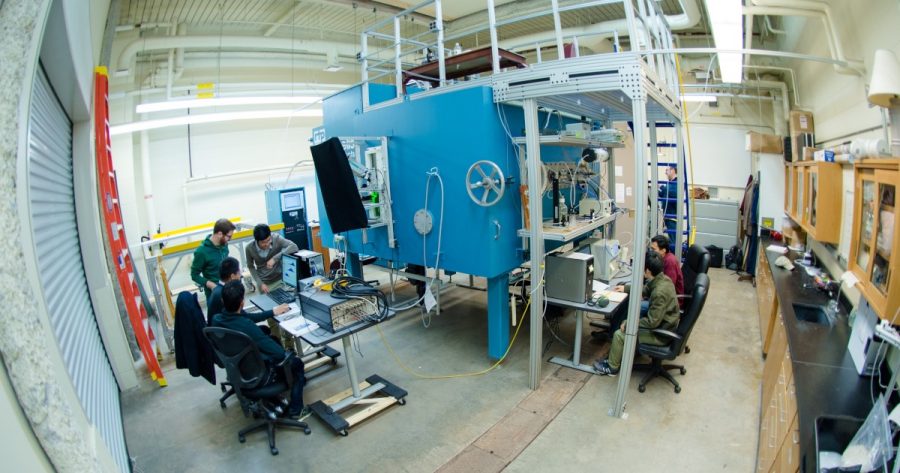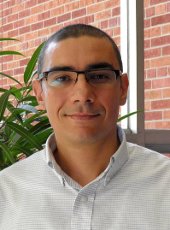Lucas Simonson has been awarded a scholarship by the German Academic Exchange Service (DAAD). He will study at the Max Planck Institute for the Physics of Complex Systems in Dresden.
The German DAAD is a joint organization of the universities and other institutions of higher education in the Federal Republic of Germany, and the world’s largest funding organization of its kind. Supported by public funds, the DAAD promotes international academic cooperation, especially through the exchange of students and academics. DAAD scholarships are awarded by selection committees comprising a panel of independent academics.
He looks forward to studying under Professor Kurt Busch starting October 2022 to the end of April 2023. “The rationale for this trip is that joining my advisor in Germany will allow me to proceed with my research activities at a fast pace without any delay due to his absence. It will also allow me to interact with world-class optics research groups at the Humboldt-Universität Berlin,” he says. “It’s a significant milestone in my academic career and will allow me to experience other cultures outside of those in the US to broaden my worldview,” says Lucas.
Studying in Germany adds another frame of reference in his study of physics. “Lucas is bringing a unique perspective to our group by combining an interdisciplinary education in both electrical engineering and physics,” says Ramy El-Ganainy, associate professor of physics.
Lucas obtained an MS in Applied Physics (back in the spring of 2021). He entered the PhD candidacy at the end of this past spring semester. Upon getting his PhD, Lucas plans to pursue R&D-related work at Ft. Belvoir in Virginia for The Command, Control, Communications, Computers, Cyber, Intelligence, Surveillance and Reconnaissance (C5ISR) Center, the U.S. Army’s information technologies and integrated systems center.
By Kimberly Geiger, College of Engineering
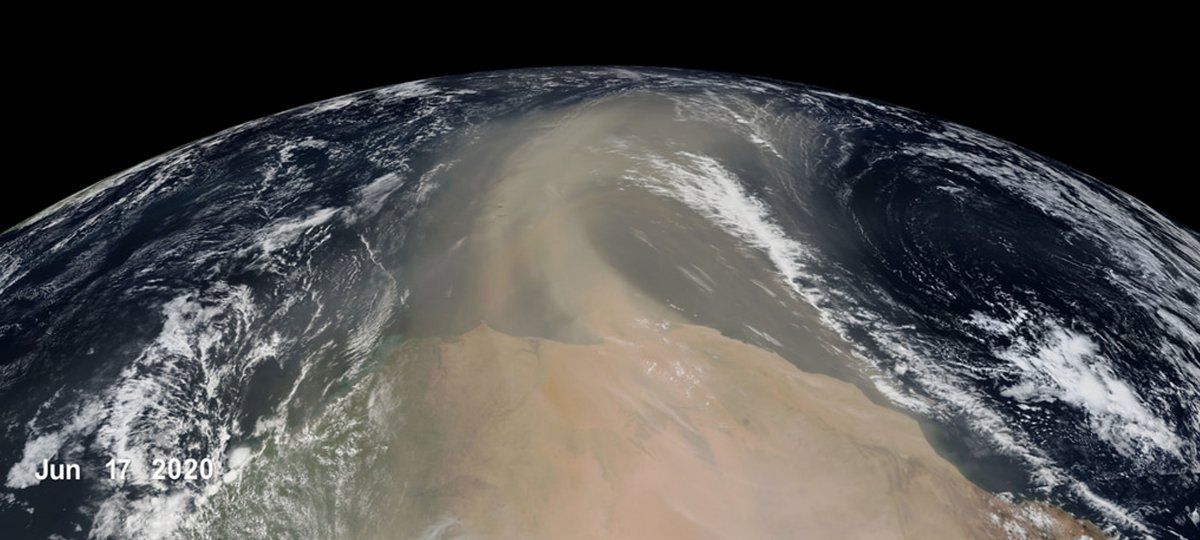
Developed at Michigan Tech, a new global weather station-based dataset named dulSD is enabling long-term, large-scale monitoring of the dust cycle.
As wind shapes the surface of the Earth, it pulls dust from dry, exposed land surfaces into the atmosphere. Xin Xi (GMES) uses observations and models to study the sources, transformation and transport of dust to assess its impact on climate and air quality.
“Airborne dust aerosols impact the Earth in a myriad of ways,” he explained. “Mineral dust interacts with the global energy budget, ocean biogeochemistry, air quality and agriculture.”
Satellite remote sensing, a major source of information to study global dust variability, lacked the specifics Xi needed. He revisited the National Oceanic and Atmospheric Administration’s Integrated Surface Database and set out to create a new dataset for evaluating global dust, which he named duISD.
How much dust is there? Read more on Unscripted, the University’s research blog.
Michigan Tech physics and applied and computational mathematics double major Anthony Palmer, along with computer science PhD candidate Elijah Cobb, won the best poster recently in the Computing [MTU] Showcase for “Universal Sensor Description Schema: An extensible metalanguage to support heterogenous, evolving sensor data.”
![Image of Anthony Palmer and Elijah Cobb in front of their poster at Michigan Tech’s Computing [MTU] Showcase](https://blogs.mtu.edu/physics/files/2022/04/20220405_1745030-800x600.jpg)
Collecting and processing underwater sensor data is a critical need for U.S. Navy operations. Differences in sensor data types and forms presents a challenge for complete and accurate use of these data. The Universal Sensor Description Schema (USDS) project seeks to design, evaluate, and deploy a unified, extensible metalanguage for supporting legacy and future sensor data across multiple programming languages and environments. Michigan Tech is collaborating with Applied Research in Acoustics LLC to develop a robust programming environment for development of data-intensive applications.
Anthony came up with the idea for the project while interning at ARiA (a small research-and-development firm serving the Navy, government and industry). It’s been the basis for his senior thesis in physics. Anthony says “This project in particular has helped me learn alot about how programming languages work and are made. It also helped me learn a new functional programming language called “Racket”. Finally, it introduced me to some awesome people in the MTU computer science department including my partner Elijah Cobb and my advisor, Dr. Charles Wallace.”
Eye-opening describes the experience for Anthony. He says, “I would say that I was surprised by the intricacy of how programming languages are built and function. I would also say that it was unexpected how useful recursion can be for solving problems in computing.” Recursion reduces time complexity, adds clarity and reduces the time needed to write and debug code.
Anthony graduates in a few short weeks. HIs attention will turn to the Navy, where he will be a submarine officer. Eventually he hopes to go into graduate school.
$4 million in NSF funding makes the Physics Pi Cloud Chamber and extensive supporting instrumentation available to the atmospheric sciences community for investigations of atmospheric processes including aerosols and clouds. The award will also support a 10-week experiential learning program for visiting students through a Pi Chamber laboratory fellowship program and broaden student participation in the physical sciences. Funding will also go towards the design of a larger cloud chamber.
What is the Pi Chamber?
The Pi Chamber at Michigan Technological University simulates cloud conditions within the range of pressures and temperatures occurring in the lower part of the atmosphere (the troposphere). It has a proven record of enabling productive and insightful research in aerosol-cloud interactions, ice nucleation, mixed-phase cloud properties, cloud optical properties, and moist Rayleigh-Bénard convection in the atmospheric sciences.
Design of a larger cloud chamber in the works.
Current cloud chambers do not allow for collisions between cloud drops as would occur in natural clouds. That’s why the NSF is funding an Aerosol-Cloud-Drizzle Convection Chamber too. NSF support of this project facilitates a cohort of researchers to conduct preliminary design work on a large cloud chamber capable of producing droplets up to the size of drizzle, which is a key transition point for fully understanding the development of precipitation. The proposed chamber would dramatically expand the US and international research community’s ability to conduct laboratory studies of clouds.
Professor Emeritus David Nitz (Physics/EPSSI) is the principal investigator on a project that has received a $249,804 research and development grant from the National Science Foundation.
This three-year project is titled “WoU-MMA: Enhancing the Neutrino Sensitivity of the Pierre Auger Observatory.”
The Pierre Auger Observatory is used by researchers from across the world to study high energy cosmic rays – high energy particles that can travel through space at speeds approaching the speed of light. This project will support the AugerPrime upgrade to the observatory, increasing the detection efficiency of the observatory’s surface detectors.
Raymond Shaw (Physics/EPSSI) is the principal investigator on a project that has received a $2,903,682 research and development grant from the National Science Foundation.
Shaw, co-investigators Will Cantrell, Kartik Iyer, Claudio Mazzoleni, and researchers from institutions across the country will collaborate on the project titled “A Community Laboratory Facility for Exploring and Sensing of Aerosol-Cloud-Drizzle Processes: The Aerosol-Cloud-Drizzle Convection Chamber.”
The proposed ACDC2 cloud chamber will be a world class facility, capable of producing droplets up to the size of drizzle while allowing air motion analogous to that in real clouds.
Ramy El-Ganainy (Physics/CQP) is the PI on a project that has received a $107,875 research and development grant from Pennsylvania State University.
The project is titled “Programmable Systems with Non-Hermitian Quantum Dynamics.”
This potential five-year project could total $599,875.
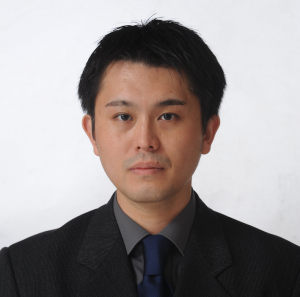
Assistant Professor Issei Nakamura receives a National Science Foundation Faculty Early Career Program award for his research on computational methods to simulate how polymeric liquids interact with electric charges. Read more in Michigan Tech news.
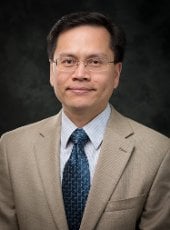
Yoke Khin Yap, a professor in the Department of Physics, was selected to become Michigan Tech’s newest University Professor during the 2019-2020 academic year, through a highly selective process. Yap joined the Department of Physics in 2002 and was promoted to full professor in 2011. Ravi Pandey, chair of physics, said “Dr. Yap is enthusiastic about both teaching and research and treats the two as inseparable.”
Read more in Tech Today.

A recent study, Radiative absorption enhancements by black carbon controlled by particle-to-particle heterogeneity in composition, stemming from a collaboration between Brookhaven National Laboratory, Michigan Tech, and other institutions was recently published in the Proceedings of the National Academy of Sciences (PNAS) and has been highlighted in the research highlights section of Nature Climate Change this March.
The research resulted in the development of a new modeling approach – guided by experimental results – to account more accurately for the effects of soot on climate. Coauthors of the paper include two former students of the Atmospheric Sciences Ph.D. program from the physics department, Drs. Janarjan Bhandari and Swarup China.
Janarjan Bhadari, ’18, currently works at the Hormel Institute, University of Minnesota, and Swarup China, ’14, is at the Pacific Northwest National Laboratory.

